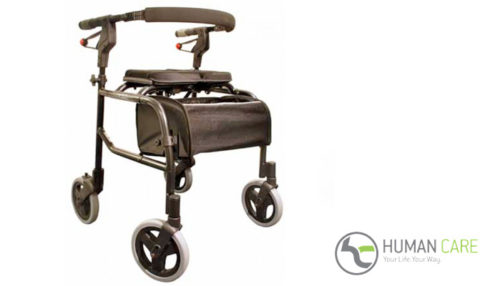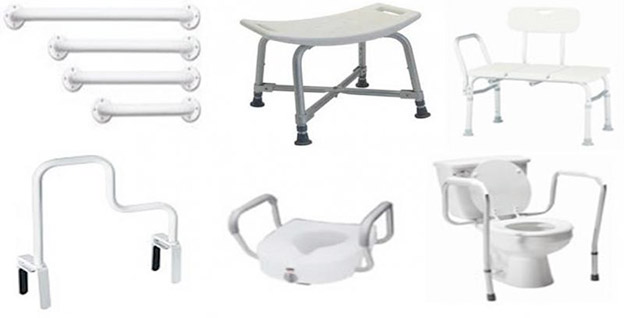How to Treat Lymphedema
What is Lymphedema?
Lymphedema refers to the swelling in one or sometimes both of your arms and legs. The swelling can range anywhere from mild to severe, depending on the severity of the condition. Lymphedema occurs when the flow of the lymphatic system is impaired. There are several causes of Lymphedema, all of which make it harder for your body to fight infections. In order to begin the treatment of Lymphedema, it is important to identify what type you have. There are two types of Lymphedema:
Primary Lymphedema: This is a rare condition that is usually inherited. Primary Lymphedema is the result of an anatomical abnormality of the lymph vessels in your body.
Secondary Lymphedema: This refers to the obstruction or damage of normally functioning lymph vessels and nodes.
Symptoms of Lymphedema
Although the most common symptom of Lymphedema is visible swelling of the area, there are other symptoms associated with it that may result in pain and/or discomfort. Some of the other common symptoms include:
- Decreased visibility of veins and nerves in the affected area
- Redness of the skin that may lead to a rash
- Decrease inflexibility of the joints
- Minor puffiness of skin
- Jewelry and clothing may appear tighter on the body
If you notice any of the above symptoms, it is important to consult a doctor to discuss the possibility of Lymphedema.
Causes of Lymphedema
Primary Lymphedema is inherited from birth, although symptoms may not present until much later in life. The causes of secondary Lymphedema can differ depending on your location. The most common cause of Lymphedema in the U.S. is breast cancer surgery. The radiation treatment can affect healthy tissue while it is destroying the cancerous tissue, leading to Lymphedema in at least one arm. In other parts of the world such as Asia, Africa, Western Pacific, and parts of Central and South America, the most common cause of Lymphedema is Filariasis. Filariasis refers to the direct infestation of the lymph nodes by a parasite known as Wuchereria bancrofti. This parasite is spread between humans through mosquitoes in hot areas and can severely affect the lymphatic system. Other causes of Lymphedema can include:
- Trauma burns
- Infections
- Compression of the lymph nodes by certain tumors
Treatments of Lymphedema
It is important to take note that there is no known cure for Lymphedema. However, there are ways to reduce the swelling and control other symptoms of Lymphedema.
Elastic Sleeves or Stockings An elastic sleeve or stocking can go a long way in reducing swelling caused by Lymphedema. The stocking will provide gradual compression to encourage the flow of lymph fluid out of the affected area. It is important to find a size that fits correctly to maximize the benefits of the compression. If the size is not right, it can lead to more pain and discomfort. A professional will be able to help you choose the correct size, and if you can’t find your size, you can get it custom made. Elastic compression stockings should be worn 24 hours a day for optimal results.
Bandages Bandages can be used to reduce swelling and other symptoms of Lymphedema. The correct way to use the bandage is by wrapping it tightly around the extremity and loosely around the trunk. This technique encourages the flow of lymph fluid towards the center of the body, resulting in the reduction of pain and swelling.
Pneumatic Compression Devices Pneumatic compression devices are inflatable garments for the arms, legs, and neck that are connected to an electrical pneumatic pump. The pump works to fill the garment with compressed air and inflates it periodically according to cycle times. It also inflates varied pressures to maximize results. This treatment is more commonly used in severe cases and works to prevent long-term scarring. Although it may be effective, a pneumatic compression device should be avoided for individuals with heart conditions and certain infections.
Manual Compression Manual compression refers to a set of massage therapies known as manual lymph drainage. This process consists of four basic massage strokes, known as a stationary circle, pump, rotary, and scoop. These four strokes are designed to manipulate the lymph nodes and vessels inside the body in order to increase the flow of lymph fluid. Manual compression can be useful for some individuals but may not necessarily be the most effective way to reduce symptoms of Lymphedema.
Exercises Some doctors may prescribe light exercise to reduce swelling caused by Lymphedema. The following exercises can be useful for reducing swelling in the arms, legs, and neck. Arms
- Raise swollen arm to heart level and rest on a cushion or pillow to encourage the flow of lymph fluids.
- Clench your hand tightly into a fist. Open and close hands with fingers spread out. Repeat 10 to 12 times.
- Sit up straight and raise your hand so that it is behind your neck. Repeat these steps 10 times.
Legs
- Sit up straight and place your leg up on a chair or stool to minimize pain.
- Lie on the bed and place your leg on a pillow to raise it. Make sure that your leg is not raised past your head.
- Lift your foot off the floor and circle your ankle clockwise and counterclockwise. Repeat 10 times on each side.
Head and Neck
- When lying down, rest your head on 2 to 3 pillows so that your head is raised and elevated. This helps the lymph fluid drain.
- Perform face exercises such as smiling, yawning, and chewing.
Deep Breathing Exercises
- Deep breathing exercises are beneficial because they change the abdominal and chest pressure, encouraging the flow of lymph fluids.
- Sit up straight in a chair or on a bed, relaxing your shoulders and chest, and take a deep breath. Hold your breath for 5 seconds before releasing it slowly. Repeat this 10 times for best results.
If you have any questions about Lymphedema or treatment options, visit our website or one of our 3 locations in the GTA. Our staff specializes in Lymphedema and we have numerous vendors for stockings, sleeves, and wraps. Adapt Home Health Care is also ADP approved for Lymphedema. Always be sure to consult a doctor before trying any of these treatments at home.
- Adapting the Workplace for People with Disabilities - December 2, 2020
- More About Rollators and The NeXus 3 - March 26, 2020
- Bathroom Safety 101 - March 12, 2020

 905-822-1614
905-822-1614



